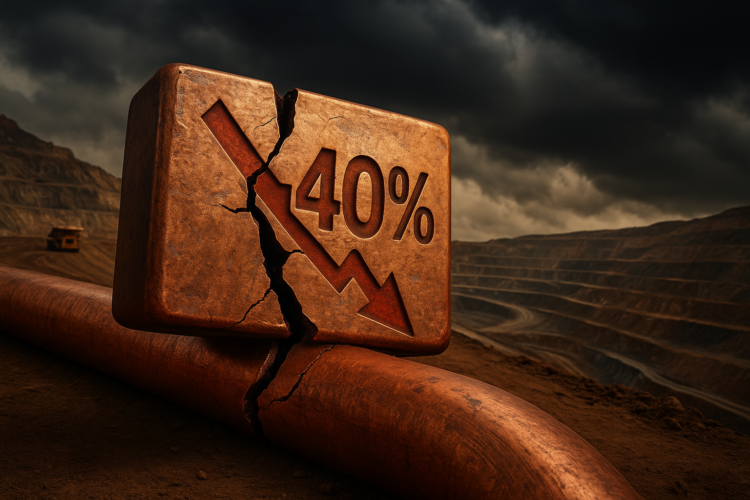Copper giant Glencore plc ($GLEN.L) has once again reported lower copper output, extending a multi-year decline that leaves the company producing roughly 40% less metal than it did in 2018. Still, the Swiss miner’s stock rallied over 9% on Wednesday, as management reaffirmed that 2025 production targets remain within reach.
The optimism came after a stronger third quarter, where copper production rose 36% to 583,000 tonnes, supported by higher ore grades across African and Peruvian operations. Yet, total annual output is still tracking 17% lower year-on-year, dragged by ongoing issues at Chile’s Collahuasi mine, co-owned with Anglo American ($AAL.L).
Collahuasi has yielded 59,000 tonnes less copper this year, hindered by water restrictions and declining grades. Glencore now forecasts 185,000–190,000 tonnes from the site and plans to reduce reliance on low-grade stockpiles in 2026. The company trimmed the top end of its full-year copper forecast to 875,000 tonnes, down from 890,000.
“Half its copper growth hinges on Argentina, where Javier Milei’s win helps sentiment but doesn’t solve social, regulatory, and logistical hurdles,” noted Alon Olsha, Bloomberg Intelligence.
Cobalt Strategy Adjusts to DRC Quotas
Beyond copper, Glencore outlined a cautious approach to its cobalt exports from the Democratic Republic of Congo, where the government recently lifted its export ban in favor of a quota system managed by ARECOMS.
For 2026–2027, quotas total 87,000 tonnes per year of contained cobalt, with 18,125 tonnes approved for late 2025, alongside a 9,600-tonne strategic reserve.
Glencore said it has sufficient stockpiles to meet quotas and will prioritize copper when market conditions justify it a clear reflection of the shifting economics between the two critical metals. Cobalt, once the battery darling, continues to face price pressure and export bottlenecks despite its role in EVs and high-performance alloys.
Renewables Deferred
The miner also withdrew from a A$35 million federal grant for a renewable energy hub at Murrin Murrin, its nickel-cobalt operation in Western Australia, citing macroeconomic and cost headwinds. The decision underscores the tension between decarbonization ambitions and capital discipline in the current rate environment.
Takeaway
Glencore’s copper volumes may be shrinking, but its price resilience and the market’s sharp reaction to steady guidance suggest that investors are again looking past short-term misses to focus on copper’s tightening global balance.
The metal remains structurally undersupplied, with new project pipelines thinning just as electrification and AI-driven energy infrastructure ramp up.
For traders, the message is simple: when a top-tier producer struggles to grow supply, the long-term copper story only gets stronger.

















